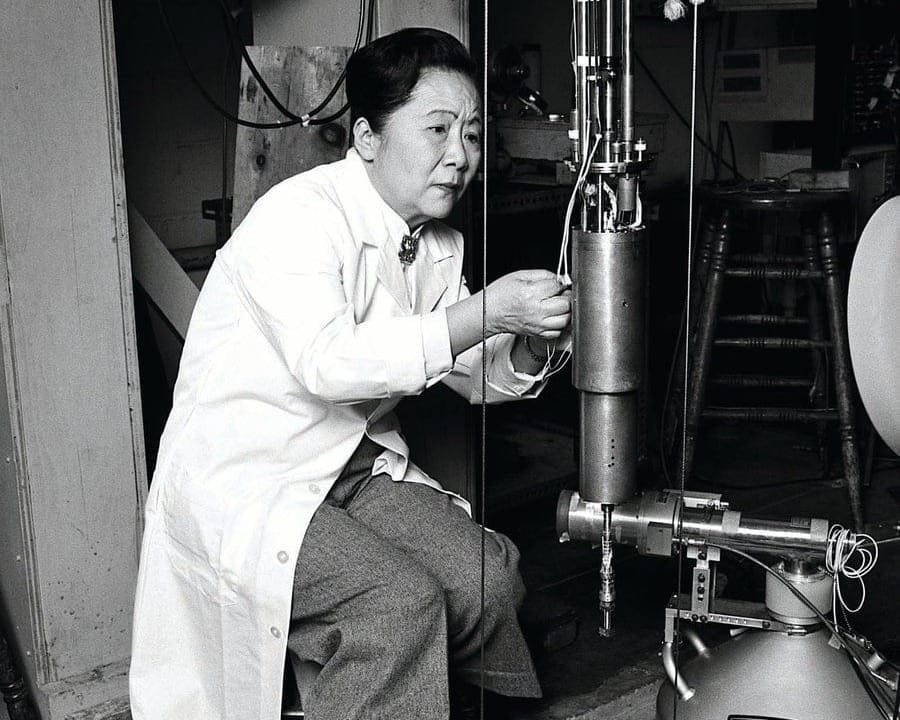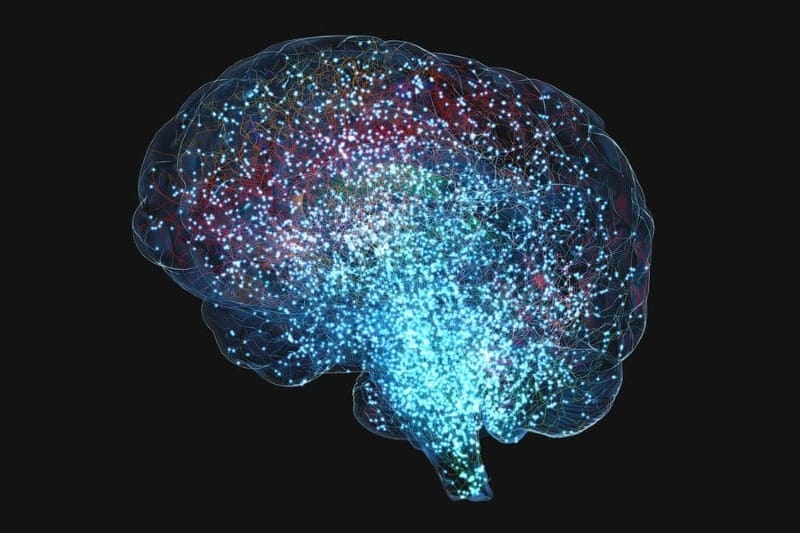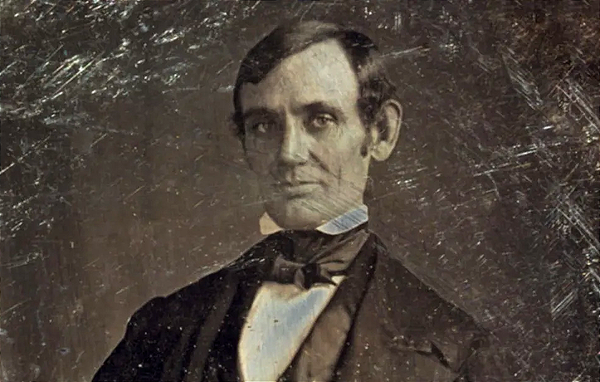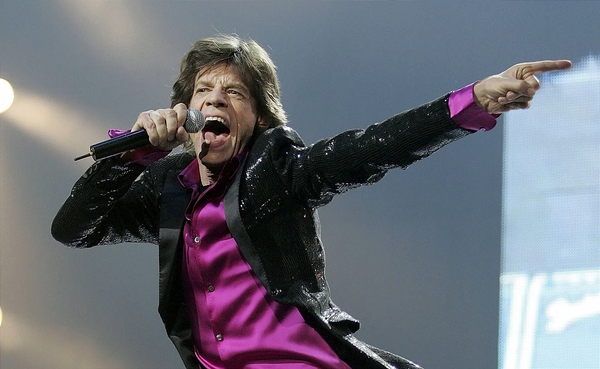She proved quantum entanglement in 1947

From Scientific American: "In November 1949 Chien-Shiung Wu and her graduate student, Irving Shaknov, descended to a laboratory below Columbia University. They needed antimatter for a new experiment, so they made their own, using a machine called a cyclotron. The machine's multiton magnet was so gigantic that administrators had to blast a hole in an exterior wall and recruit the football team to maneuver it into the building. The magnetic field produced by a cyclotron accelerates particles to dizzying speeds. In the lab, Wu and Shaknov used it to bombard a sheet of copper with deuterons, generating an unstable isotope, Cu 64, as a source of positrons—the antimatter. When a positron and an electron collide, they annihilate each other, releasing two photons that fly apart in opposite directions. A few years earlier physicist John Wheeler had predicted that when matter and antimatter met, the resulting photons would be orthogonally polarized. Wu and Shaknov were looking for proof."
Why did French Canadian lumberjacks start jumping and screaming?

From Amusing Planet: "In the late 19th century, a rare and highly unusual neuropsychiatric condition was observed among a group of French-Canadian lumberjacks living in the Moosehead Lake region of northern Maine. Those affected exhibited an extreme and exaggerated startle reflex. When startled by a sudden movement or loud noise, they reacted with dramatic involuntary responses, such as leaping into the air, screaming, repeating words, or instantly obeying shouted commands. The mystery of the Jumping Frenchmen of Maine first drew the attention of the scientific community in 1878, and American neurologist George Miller Beard travelled to the Moosehead Lake region to see first-hand if the accounts were true. He wasn’t disappointed."
Humpback whales are approaching people to blow bubble rings

From This Is Colossal: "After the orca uprising captivated anti-capitalists around the world in 2023, scientists are intrigued by another form of marine mammal communication. A study released this month by the SETI Institute and the University of California at Davis dives into a newly documented phenomenon of humpback whales blowing bubble rings while interacting with humans. In contrast to the orcas’ aggressive behavior, researchers say the humpbacks appear to be friendly, relaxed, and even curious. This study follows 12 distinct incidents involving 11 whales producing 39 rings, most of which have approached boats near Hawaii, the Dominican Republic, Mo’orea, and the U.S. Atlantic coast on their own."
Hi everyone! Mathew Ingram here. I am able to continue writing this newsletter in part because of your financial help and support, which you can do either through my Patreon or by upgrading your subscription to a monthly contribution. I enjoy gathering all of these links and sharing them with you, but it does take time, and your support makes it possible for me to do that. I also write a weekly newsletter of technology analysis called The Torment Nexus.
Your brain glows slightly and scientists can't figure out why

From Scientific American: "In a phenomenon scientists refer to as ultraweak photon emissions (UPEs), living tissues emit a continuous stream of low-intensity light, or biophotons. Scientists think that this light comes from the biomolecular reactions that generate energy, which create photons as by-products. The more energy a tissue burns, the more light it gives off—which means, of our body’s tissues, our brain should glow brightest of all. But while biophotons coming from participants’ heads could be easily distinguished from background levels of photons in the room, increased EEG activity in a given brain region didn’t result in higher levels of biophotons being captured."
Turbocharged mitochondria power birds’ epic journeys

From Quanta: "Weighing in at a single ounce, the white-crowned sparrow can fly 2,600 miles, from Mexico to Alaska, on its annual spring migration, sometimes traveling 300 miles in a single night. Arctic terns make even longer journeys of 10,000 miles and more from the Arctic Circle to Antarctica, while great snipes fly over food-poor deserts and seas, sometimes covering 4,200 miles in four days without stopping. Scientists have long been fascinated with the physiological changes that birds undergo before and during migration. Some birds eat so much fat before their journeys that they double in body weight. But researchers have only recently started to explore at a fundamental level how migratory birds get the energy required to keep themselves aloft for days on end without eating."
Some next-level shadow art
Next level shadow art,
— Science girl (@gunsnrosesgirl3) June 22, 2025
📹 kuronushi_
pic.twitter.com/dkU43w5m0G
Acknowledgements: I find a lot of these links myself, but I also get some from other newsletters that I rely on as "serendipity engines," such as The Morning News from Rosecrans Baldwin and Andrew Womack, Jodi Ettenberg's Curious About Everything, Dan Lewis's Now I Know, Robert Cottrell and Caroline Crampton's The Browser, Clive Thompson's Linkfest, Noah Brier and Colin Nagy's Why Is This Interesting, Maria Popova's The Marginalian, Sheehan Quirke AKA The Cultural Tutor, the Smithsonian magazine, and JSTOR Daily. If you come across something interesting that you think should be included here, please feel free to email me at mathew @ mathewingram dot com



